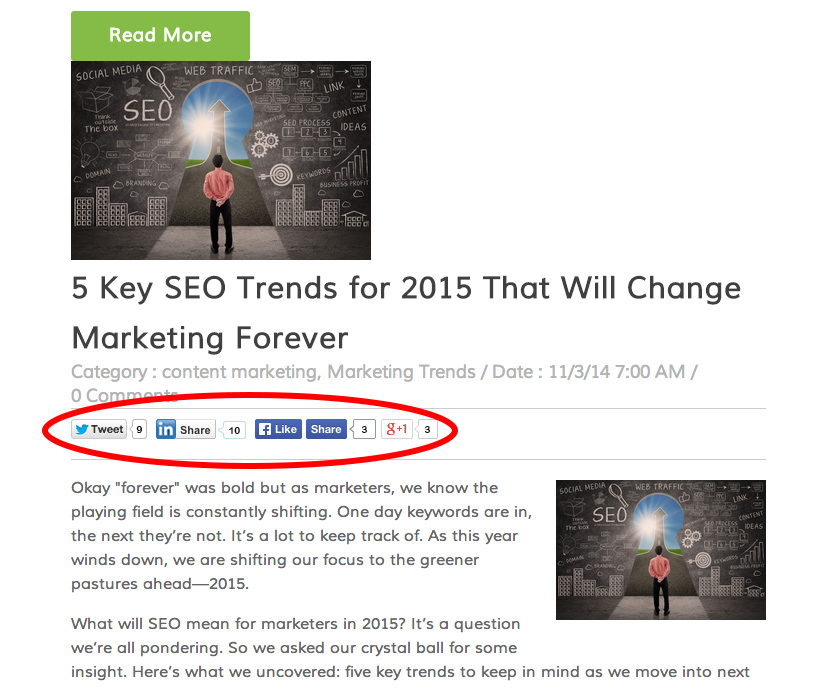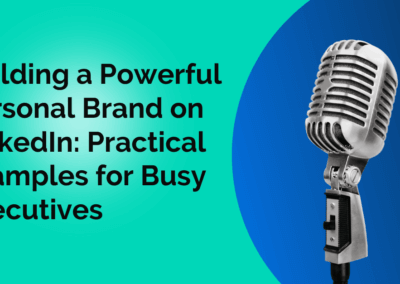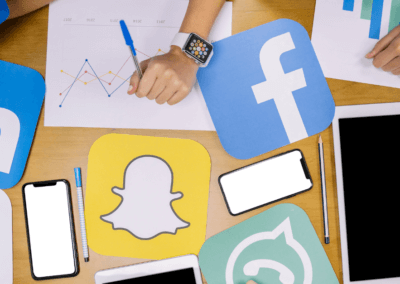Imagine this situation: a potential prospect miraculously finds a recent article you published. They want to share it with their Twitter followers. The problem: you haven’t integrated any social media share buttons! A big problem if you’re trying to gain brand awareness and generate buzz. That potential prospect will likely walk away… never to return again.
The solution? Create social media share and follow buttons so that your prospects, followers, customers, etc. can promote your business for you!
So what are these super-buttons?
Social Media share buttons allow prospects to share your content with other people—their followers, other industry influencers, etc.
Social media follow buttons allow prospects to follow your company. These prospects have found what you have to say interesting and want to make sure they don’t miss out on your latest posts.
Any social media marketing agency will tell you that social media engagement plays a major role in growing your business today. The goal across every social media platform is to be followed (ideally by customers, prospects, and influencers in your industry) and to be shared (again, by these key players).
Is your company a social media superstar yet? Probably not. So let’s take a look at some steps to help get you there.
Why use social media buttons?
Using social media buttons allows for your prospects to easily share what you have to say or follow your company. They eliminate the tedious task of copying and pasting links. All your prospect has to do is simply click on a button and send your message across their network. You’ve spent all this time creating remarkable content, don’t you want it to be found and spread like wildfire?
In the Inbound Marketing Methodology, the last step in the process is delighting customers into promoters. Using social media is a great way to do that. And not just for your customers. Complete strangers may really like what you have to say, follow you, and share your content with the rest of their social media network.
Where do they go?

Your instinct might be to say: “Let’s put these buttons on everything!” I understand how tempting this may be, but please, DON’T. Sometimes too much of a good thing is a bad thing. Here’s your Do’s and Don’ts for placing social media sharing and following buttons:
DO place them on blogs, articles, and other content you have published on your website that is publicly available—i.e. you don’t have to fill out a landing page to access it.
DO place them on your website pages—in the footer usually works best. Websites with social buttons are linked to seven times more on Twitter than those without.
DON’T place social media buttons on Thank You pages. This allows a potential prospect to bypass your landing page and share your content without allowing you to capture any customer data.
Monitoring social media activity
Data analysis should always be a focus when monitoring any type of marketing campaign, especially social media activity. Use marketing automation systems to track and analyze your campaigns. Here are some things to watch for:
- Identify trends that perform well—what content is causing people to share or follow you?
- Experiment—for example, use images in some tweets, LinkedIn posts, etc. and not in others. Which ones were more effective?
- Monitor specific followers—especially if they are engaging with you. Engage back at ’em!
Your business doesn’t stand a chance against your competition if you aren’t using the power of social media engagement to your advantage. Prospects, customers, and promoters thrive on the ability to engage with companies through social media outlets because it increases transparency and provides greater customer service. Engage with your prospects today and turn them into customers tomorrow!
{{cta(‘7f21532c-ec81-46f6-bb35-abd04f914618’)}}



